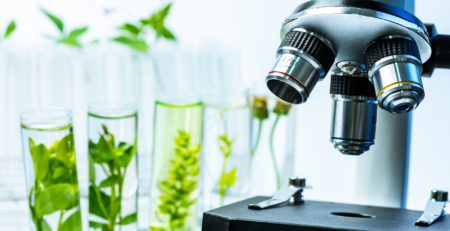Agarose Applications in Molecular Biology
Agarose Applications in Molecular Biology
What is Agarose?
Agarose is a polysaccharide obtained from red seaweeds, which is made up of repeating units of agarobiose, a disaccharide formed by alpha and beta galactoses.
It is commonly used in molecular biology for molecular separation by electrophoresis, especially DNA and RNA.
Agarose dissolves in warm temperatures (50-60 ° C) and when cooling solidifies, forming a high porosity gel.
The agarose chains form helical fibers generating a three-dimensional mesh of channels with diameters between 50 and > 200 nm, creating a fibrous network that can be used as a filter for different molecules separation, the pore size being inversely proportional to agarose concentration.
Who discovered agarose application for DNA electrophoresis?
The creation of electrophoresis as a single-stranded DNA separation method dates back to 1962, developed by Matsubara and Takagi, when starch was used as a running gel.
The need to analyze variable lengths DNA molecules led to the study of other compounds that could be used as a running gel in electrophoresis tests, with agarose emerging in 1969 as a suitable candidate due to its features.
What is agarose gel electrophoresis basis for nucleic acids?
Electrophoresis is a technique for biomolecules separation (generally nucleic acids or proteins) in an electric field on a porous matrix, whose composition depends on the biomolecule to be analyzed.
Molecules in an electric field move at a speed dependent on their charge, shape, and size.
Cell DNA molecules are excessively large to move through a normal electrophoresis gel, but can be analyzed if they have previously been fragmented in a controlled manner. One of the most common ways to fragment DNA is using Restriction enzymes.
The DNA or RNA molecule electrical charge depends on its phosphate groups, and the number of these is equal to twice the number of base pairs (bp). Besides, the shape of all DNA molecules is essentially the same.
Consequently, it turns out that nucleic acid mobility in electrophoresis depends exclusively on molecule length.
What are agarose gel electrophoresis applications in molecular biology?
Agarose gel electrophoresis is the standard method for:
- DNA fragments separation after digestion with restriction enzymes.
- Nucleic acid molecules (DNA / RNA) separation before membranes transfer for subsequent analysis.
- PCR (polymerase chain reaction) products analysis verifying whether or not amplification occurred.
- Molecules size estimation in a DNA or RNA mixture.
- Purified nucleic acids quantity and/or quality estimation.
What are MaxAgarose Tablets advantages?
MaxAgarose tablets are designed to provide a cleaner, safer, organized and more convenient environment than powdered agarose. Each tablet contains a predetermined agarose amount (0.5 g).
MaxAgarose tablets utilization eases gels preparation for electrophoresis since it is not necessary to weigh the agarose powder, which requires a laboratory balance and is time consuming. It also helps to avoid spills and the possibility of weighing errors.
Simply add the appropriate number of tablets to your buffer to obtain the needed concentration, incubate at room temperature for five minutes, warm the solution, then prepare your gel as usual.
BIBLIOGRAPHIC REFERENCES
- Electroforesis de proteínas y de ácidos nucleicos
Biomodel. Páginas de bioquímica y biología molecular (2021)
Universidad de Alcalá UHA. España.
http://biomodel.uah.es/tecnicas/elfo/inicio.htm
- Electroforesis: fundamento, técnica, para qué sirve, ejemplos.
Raquel Parada Puig. (29 de mayo de 2020).
Lifeder.com (life daily education & research).
https://www.lifeder.com/electroforesis/
- Electroforesis: fundamentos, avances y aplicaciones
Montalvo Navarro Carlos Antonio, Lugo Flores Marco Antonio
NISON / EPISTEMUS 26 / Año 13/ 2019/ pág.: 48-54
https://epistemus.unison.mx/index.php/epistemus/article/view/96/70
- Electroforesis de ADN
Francisco Fierro Fierro (2014)
Departamento de Biotecnología, División de Ciencias Biológicas y de la Salud, Universidad Autónoma Metropolitana-Unidad Iztapalapa, México D.F.
http://www2.inecc.gob.mx/publicaciones2/libros/710/electroforesis.pdf
- Separación de ADN por electroforesis horizontal en geles de agarosa
Manual de Prácticas de Laboratorio de Biología Molecular 2012
Universidad Autónoma Metropolitana
División de Ciencias Naturales e Ingeniería
http://www.cua.uam.mx/pdfs/conoce/libroselec/Manual_de_Prcticas_de_BM.pdf
If you liked our blog post, share it with your friends and if you have any questions, leave them in the comments.

